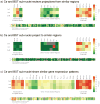Extending the amygdala in theories of threat processing
- PMID: 25851307
- PMCID: PMC4417372
- DOI: 10.1016/j.tins.2015.03.002
Extending the amygdala in theories of threat processing
Abstract
The central extended amygdala is an evolutionarily conserved set of interconnected brain regions that play an important role in threat processing to promote survival. Two core components of the central extended amygdala, the central nucleus of the amygdala (Ce) and the lateral bed nucleus of the stria terminalis (BST) are highly similar regions that serve complimentary roles by integrating fear- and anxiety-relevant information. Survival depends on the ability of the central extended amygdala to rapidly integrate and respond to threats that vary in their immediacy, proximity, and characteristics. Future studies will benefit from understanding alterations in central extended amygdala function in relation to stress-related psychopathology.
Keywords: anxiety; cross-species; extended amygdala; gene expression connectivity; neuroimaging.
Copyright © 2015 Elsevier Ltd. All rights reserved.
Figures




References
-
- Ledoux J. The Emotional Brain: The Mysterious Underpinnings of Emotional Life. Simon and Schuster; 1998.
-
- Paré D, et al. New vistas on amygdala networks in conditioned fear. J Neurophysiol. 2004;92:1–9. - PubMed
-
- Phelps EA. Emotion and cognition: insights from studies of the human amygdala. Annu Rev Psychol. 2006;57:27–53. - PubMed
Publication types
MeSH terms
Grants and funding
- R21 MH091550/MH/NIMH NIH HHS/United States
- P50 MH084051/MH/NIMH NIH HHS/United States
- R21 MH092581/MH/NIMH NIH HHS/United States
- P50MH84051/MH/NIMH NIH HHS/United States
- R21MH91550/MH/NIMH NIH HHS/United States
- R01 MH081884/MH/NIMH NIH HHS/United States
- R21MH092581/MH/NIMH NIH HHS/United States
- P50 MH100031/MH/NIMH NIH HHS/United States
- P50MH100031/MH/NIMH NIH HHS/United States
- R01MH46729/MH/NIMH NIH HHS/United States
- P51 OD011106/OD/NIH HHS/United States
- R01 MH046729/MH/NIMH NIH HHS/United States
- R01MH81884/MH/NIMH NIH HHS/United States
LinkOut - more resources
Full Text Sources
Other Literature Sources

